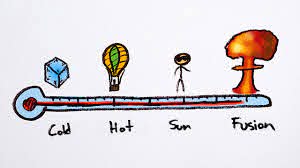Did you know that if the sun were fueled by combustion of, say, gasoline or wood,
你知道如果太阳是用汽油或木头来充当燃料的话,
it would burn out in just a few millennia?
它将只能持续几千年吗?
So how is it still here after 4.5 billion years?
那为什么过了45亿年,太阳还在呢?
Physics.
答案是物理。
The sun is like a big nuclear submarine… in the sky.
太阳就像是太阳就像一艘巨大的发生核反应的潜艇……在天上的。
That's right -
这就对了。
it's fueled by nuclear reactions that fuse hydrogen atoms together into helium and other heavier elements,
它是用核反应让氢原子组在一起变成氦原子或者是其他更重的元素,

releasing huge amounts of energy in the process.
同时也释放了极大的能量。
In this way the sun is slowly converting its mass into energy
这样的话,太阳就缓慢将自己的质量转换为能量,
– in the form of sunlight!
以光能的形式!
And it has more than enough fuel to last billions of years.
而且它有足够的燃料使自己活上几十亿年。
But nuclear fusion's no walk in the park
但核反应不是那么简单的,
- on earth we need to heat hydrogen up 100 times hotter than the sun to get a fusion reaction.
在地球上我们要使氢产生核反应的热度是太阳所需热度的100倍。
So how does the sun do it?
那太阳是怎么做到的呢?
Quantum tunneling.
答案是量子隧穿。
There's a small chance (which I'll explain later)
在很小的几率里(后面我会解释),
that hydrogen atoms, even if they aren't quite hot enough for fusion, will fuse together anyway.
即使氢原子没有达到一定的热度,它们也自然会发生核融合。
And the sun is SO big and has so much hydrogen that these small chances happen all the time,
太阳太大了,就算只有很小的概率,氢也随时在进行核融合,
and that's what keeps the sun energized!
太阳也是由此十分有活力!
So when the sun shines tomorrow, give thanks to quantum mechanics.
所以明天看到太阳发光发亮时,感谢量子力学吧。











